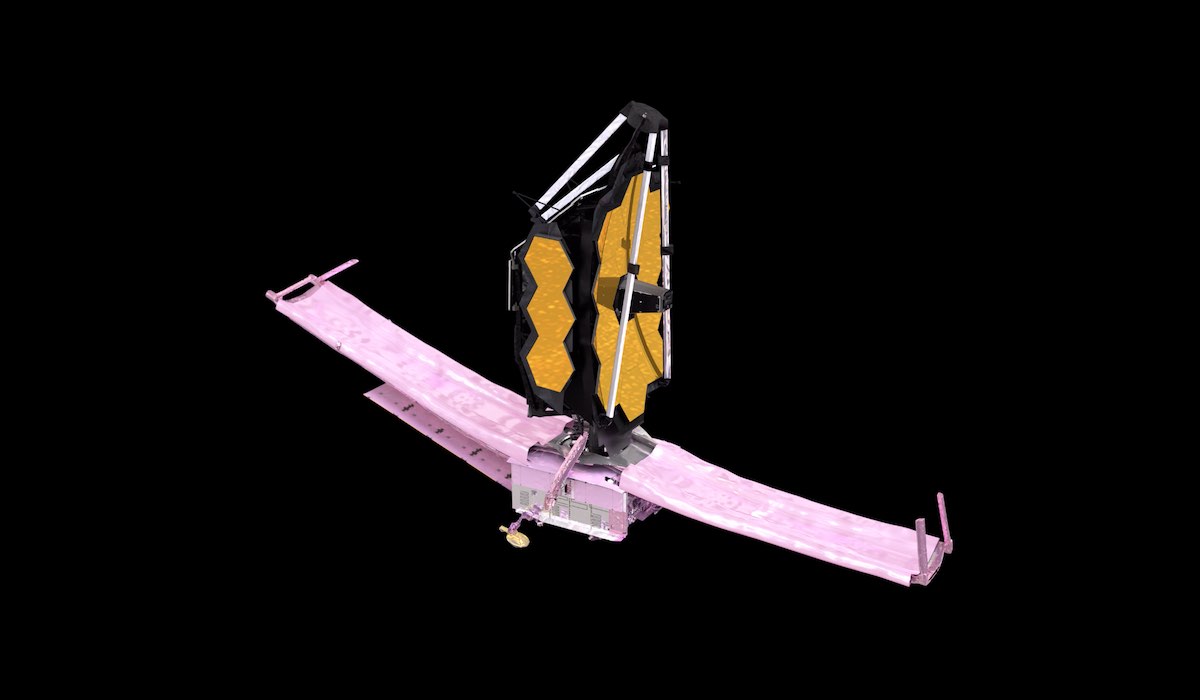
The James Webb Space Telescope extended a four-foot tower Wednesday to give the observatory’s mirrors and instruments, designed to function at cryogenic temperatures, enough separation from the hot side of the spacecraft after the mission’s sunshield deploys over the next few days.
Webb’s Deployable Tower Assembly moved the telescope’s mirrors, still folded up in their launch configuration, away from the spacecraft bus. The telescope structure contains Webb’s 18 gold-coated hexagonal primary mirror segments and four infrared instruments mounted in a carbon composite module.
In an update posted online, NASA said the motor-driven telescoping tower extended about 48 inches (1.22 meters). The deployment took more than six-and-a-half hours, beginning at around 9:45 a.m. EST (1445 GMT) and ending at approximately 4:24 p.m. EST (2124 GMT), according to NASA.
Ground teams at the Space Telescope Science Institute in Baltimore, Maryland, methodically sent commands to Webb throughout the day. The human-in-the-loop control plan allows engineers to track each step of Webb’s critical deployments, from launch through commissioning and instrument calibration, culminating in the first science observations around six months into the mission.
But the mechanisms on Webb are robotic and outside the reach of engineers on Earth, or astronaut servicing. There are 344 critical devices that must function as intended for Webb to accomplish its mission observing the universe.
Webb is the largest space telescope in history, 100 times more powerful than the Hubble Space Telescope. Its primary mirror will span 21.3 feet, or 6.5 meters, in diameter once fully deployed. Hubble’s monolithic primary mirror has a diameter of 7.9 feet, or 2.4 meters.
The Deployable Tower Assembly provides separation between the telescope and the spacecraft. Webb’s sunshield, which will unfurl to the size of a tennis court, will put the telescope’s mirrors and instruments in permanent shadow, allowing them to cool down nearly minus 400 degrees Fahrenheit.
Webb’s detectors need to be cold to sense the faint infrared light emitted from galaxies more than 13.5 billion years ago, within 100 million to 200 million years after the Big Bang. The mission will also study the atmospheres of planets around other stars, and reveal new insights into our own solar system.
Webb’s spacecraft bus, which must point its solar array toward the sun to generate electricity, will see temperatures of nearly 200 degrees Fahrenheit.
The sunshield enables Webb to achieve the nearly 600-degree temperature differential, and the tower extension Wednesday also helped clear the way for the observatory to start unfolding the five-layer thermal barrier in the next few days.
“All of the material for the sunshield is actually stowed in that area, or some of it is, so we need to get the telescope up away, so that will allow us to pull that material out,” said Keith Parrish, NASA’s commissioning manager for Webb, in an interview before the mission’s Christmas Day launch.
Since launch on a European Ariane 5 rocket, Webb has extended its solar panel, completed two mid-course correction burns, unfurled its high-gain antenna, and unfolded two pallet structures Tuesday containing the ultra-thin sunshield material.
The next big event, tentatively set for Thursday, will be the opening of protective covers over the sunshield membranes. The five layers, each made of an insulating material known as kapton, took a month to carefully, and manually, stow inside the pallets, akin to the way a parachute is packed before a skydive.
An aft momentum flag will also deploy Thursday to help balance Webb against the tenuous, but constant, bombardment by pressure from sunlight. Photons zipping by Webb at the speed of light will push against the sunshield, and the rear flap will help stabilize the observatory and minimize fuel usage to counteract the pressure.
As soon as Friday, mission control will uplink commands for Webb to extend two booms from each side of the spacecraft. The booms will help pull the sunshield layers into their distinctive kite-like diamond shape.
A system of cables and pulleys will tension each of the five layers this weekend, creating space between each membrane to help radiate heat from the sun back into space. The sunshield deployment is widely cited by astronomers and engineers as the riskiest moment in the life of the nearly $10 billion Webb telescope.
Then engineers will move on to position Webb’s secondary mirror and the telescope’s port and starboard mirror wings into place on each side of the fixed central mount. The wings each hold three of Webb’s 18 primary mirror segments, while 12 segments are on the center section.
Email the author.
Follow Stephen Clark on Twitter: @StephenClark1.
from Spaceflight Now https://ift.tt/3qxrlvH
via World Space Info







0 comments:
Post a Comment